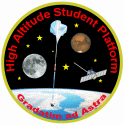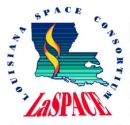



Payload 07 Information
Payload Flight Number:
Institution:
Payload Title:
UND-UNF Ozone
Student Leader:
Faculty Advisor:
Payload class:
SMALL
Payload ID Number:
07
Mass:
2.2 kg
Current:
330 mA
Serial Downlink:
Yes
Analog Downlink:
Serial Commands:
No
Discrete Commands:
Payload Specification & Integration Plan
Due: 06/21/2013
Delivered:
Payload Integration Certification
Scheduled: 08/02/2013
Actual:
Flight Operation Plan
Due: 07/26/2013
Delivered:
Final Flight / Science Report
Due: 12/13/2013
Delivered:
Abstract:
The UND-UNF team has successfully flown payloads and measured the ozone gas profile in the stratosphere on the HASP balloon flights since 2008. The measured ozone profiles were matched very well with the expected theoretical profile. Based on these successes, particularly with the 2012 flight after accounting for a few scientific and technical problems, the UND-UNF team proposal for the HASP 2013 flight aims to move towards the development of a free flying payload, to verify generation of ozone, and to measure the ozone profile using an improved version of the gas sensor arrays. The output of the proposed payload will help us with the development of a free flying payload consisting of small gas sensors capable of flying on meteorological weather balloon, rockets, or sub-orbital space vehicles. This payload will include improved versions of the 8 Nanocrystalline ITO thin film gas sensors, 8 Nanocomposite WO3-ITO thin film gas sensors, 6 Nano-fibers ITO thin film gas sensors, as well as 2 commercially available ozone sensors which will be used to verify the performance of the sensors. The temperature controller will be used to maintain a nearly constant operating temperature of all gas sensors in the range of 25-30 oC. Three sensor boxes will be mounted on the three sides of the rectangular payload body. An ultraviolet light sensor will be mounted just below the ozone gas sensor box in order to measure the amount of UV light, which will support the science concept of ozone gas generation in the presence of UV light. This concept will help us to understand the effect of any dark shadows on the gas sensors, particularly at the time of sunset, as well as provide information on how ozone gas concentrations decrease during the night. In addition, a temperature sensor will measure the ambient temperature, improved pressure sensors for measure high and low pressure ranges, and an improved GPS which can measure altitude throughout the flight without any blockage of transmission will be mounted on the payload. Payload data communication will be performed by the HASP communication link as well as a government certified radio, antenna, and battery pack. The radio can be turned on or off by command from the ground. Ozone sensors will be fabricated and calibrated with ozone gas in a low pressure chamber at UNF and also tested at UND.
Monthly Briefings:
UND-UNF_Report_April_2013.pdf UND-UNF_Report_August_2013.pdf UND-UNF_Report_February_2013.pdf UND-UNF_Report_January_2013.pdf UND-UNF_Report_July_2013.pdf UND-UNF_Report_June_2013.pdf UND-UNF_Report_March_2013.pdf UND-UNF_Report_May_2013.pdf UND-UNF_Report_November_2013.pdf UND-UNF_Report_October_2013.pdf UND-UNF_Report_September_2013.pdf |